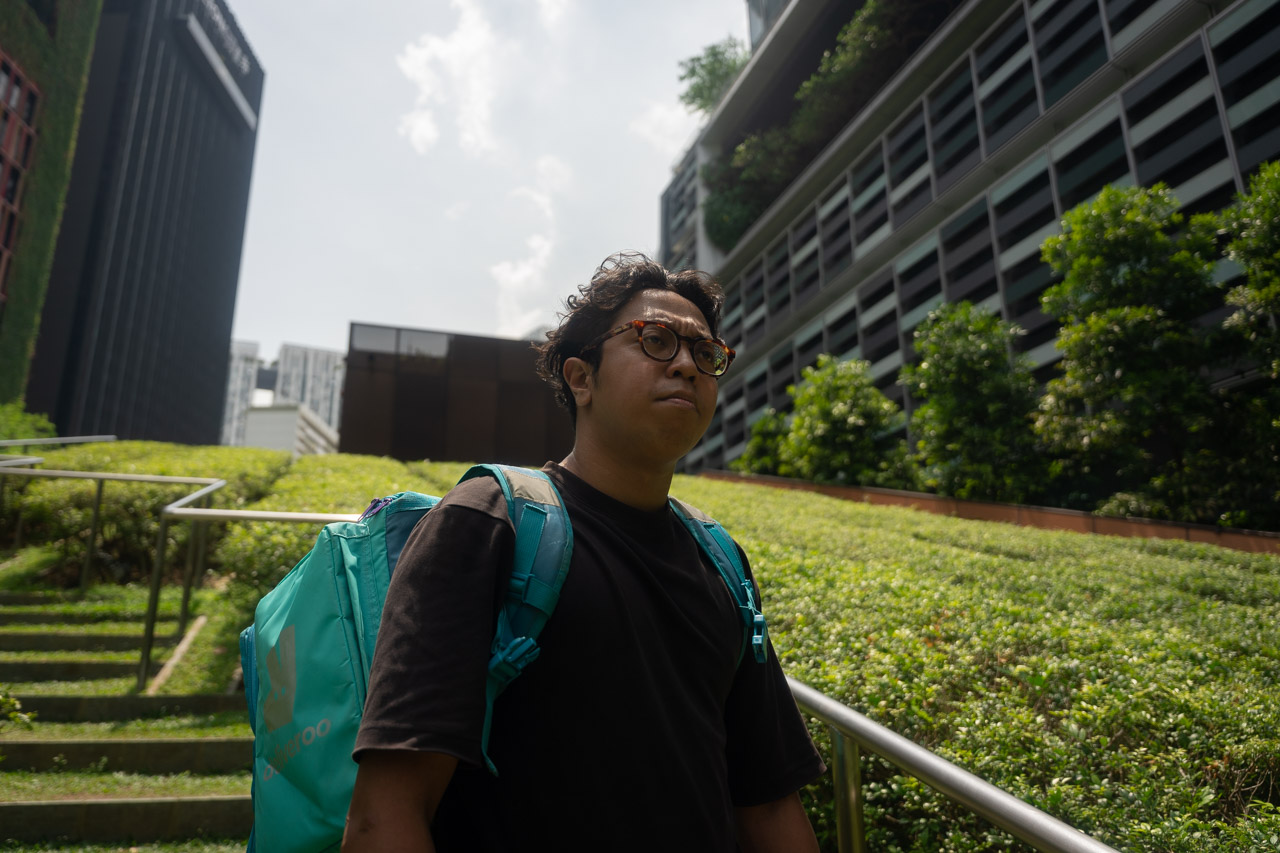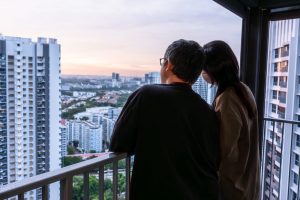Top image: Shiva Bharathi Gupta for RICE Media
Depending on who you ask, Singapore’s Central Provident Fund (CPF) is either the ticket to retirement security or the thief of financial autonomy.
According to American consulting firm Mercer, which is a little further removed, CPF is a relatively robust pension system. The firm’s 2022 Global Pension Index ranked it the best in Asia, and ninth out of 44 systems overall.
ADVERTISEMENT
Everyone (above a certain age) has something to say about the savings scheme. So it’s not surprising that its introduction into the platform worker industry, announced in November 2022, ignited strong reactions from workers on both sides of the fence.
Some gig workers are aghast at the prospect of bringing home less money. For others, like food delivery rider and national cyclist Luqmanul Hakim Bin Othman, the CPF contribution recommendation holds far more significance beyond dollars and cents.
Platform Worker Protection
Unlike a typical employment relationship, platform workers don’t get that monthly CPF top-up.
It’s turned into a bigger issue now that platform workers have become ubiquitous. Hang around an F&B establishment and a delivery rider or two is bound to appear. Ride-hailing apps are so commonplace that it’s apparently hard (much harder than it used to be, at least) to hail a cab on the streets.
Statistics back this up. As per the Ministry of Manpower’s Comprehensive Labour Force Survey, the number of regular platform workers increased from 73,200 in 2021 to 88,400 in 2022.
Their lack of protection hasn’t gone unnoticed. In his 2021 National Day Rally speech, Prime Minister Lee Hsien Loong made mention of the situation, saying he was “especially concerned”.
These workers, who are “just like employees”—but not full-time employees, mind you—face issues affording housing, healthcare, and retirement, PM Lee said. “We must address the issues to give these workers more secure futures,” he added.
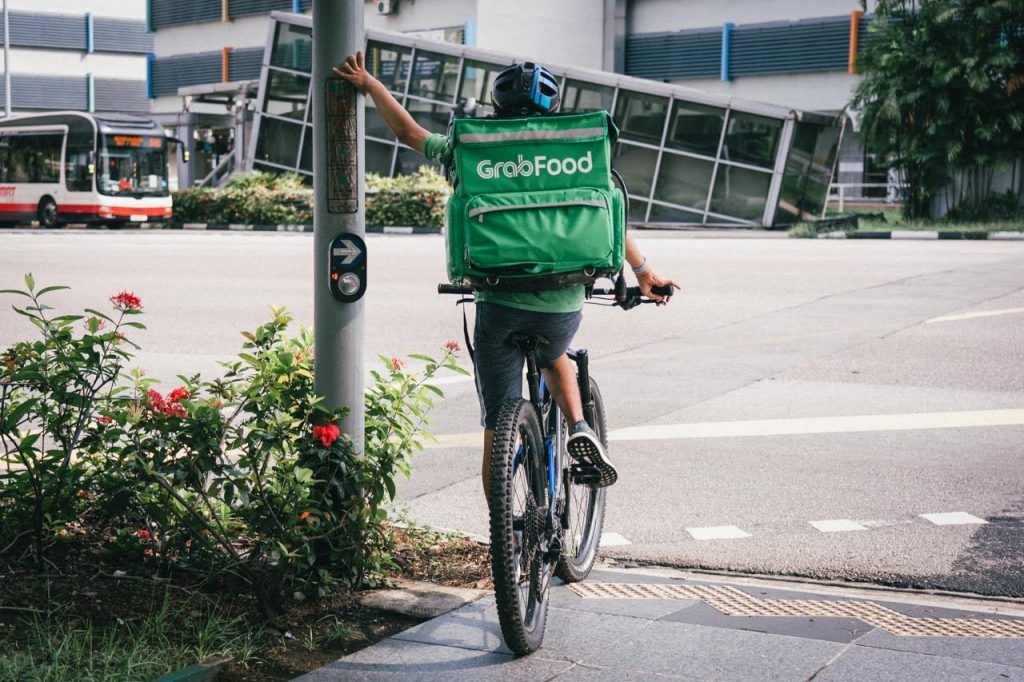
Roughly a year and a lot of research later—the Advisory Committee on Platform Workers spoke to over 20,000 platform workers, over 30 companies and associations, and nearly 2,700 platform users—new regulations are on the horizon for the platform work industry.
The one that received the most press is the update to platform workers’ CPF contribution amounts. From mid-2024, platform workers such as private-hire drivers and food delivery riders will be inducted into the CPF system if they’re below 30. Those who are older will be allowed to opt in, but can’t change their minds later on.
The amount they’ll have to set aside will be upped gradually and is projected to be on par with other sectors after five years. For the typical employee, that’s up to 20 percent of their monthly income. For employers, that’s up to 17 percent to be contributed into workers’ CPF accounts.
These new recommendations, proposed by the Advisory Committee on Platform Workers and accepted by the government, are underscored by two points:
– The first is that gig workers should not be classified as employees—a win for platforms, who’ve maintained this distinction for years.
ADVERTISEMENT
– The second is that platform companies exerting “a significant level of management control” over these workers should offer them basic protections—probably more of a win for the workers.
To Own a Home
While regular employees may be able to fully pay off their home loan using their CPF monies, the platform worker can’t. They’re at a disadvantage.
Predictably, the biggest concern for some workers is the drop in take-home pay, with workers preferring to have cash on hand or to accumulate their own savings, per CNA. Fortunately at least, some funding is earmarked to help low-income platform workers tide through the first few years.
Despite the pushback, three platform workers RICE spoke to emphasised the importance of contributing to CPF.

Luqmanul, 24, who has been a delivery rider for four years, posits that some of the riders he comes across in their 30s or middle-age years don’t have a financial incentive to contribute to their CPF.
“I cannot judge their financial, economical and their social conditions,” he offers. “But the reason why most of them are not incentivised to commit to the CPF is that they do not have the interest to commit to buying HDB. Most of them either live with peers or live with their parents.”
From his emphatic Facebook post on the matter and his passionate speech when we meet him for a chat, it’s pretty obvious that his stance contrasts with the views of other fellow riders.
Barely pausing to catch a breath, Luqmanul explains: “If you do not want to be tied down by the CPF system, in a way, inevitably in the future, you will be tied down by debt trap.”
If anyone knows a thing or two about uncomfortable financial positions, it would be Luqmanul. He reveals that he’s gone through periods of couch surfing and had just $50 in his bank account when he entered National Service.
“The important question to also ask yourself, is how much cashflow does one need to live day to day. Having a lot of money on hand and not knowing how to leverage on your [Ordinary Account] is as good as giving a junkie another needle to shoot heroine into his arms,” he tersely wrote on Facebook.
“Your instant gratification with your finance will lead to dire consequences in the future if you plan to settle down or have kids.”
Things are looking up for him nowadays. Luqmanul has gone from pulling 16-hour food delivery shifts to working about two hours a day as he prepares to enrol in a university.
Drivers in Support of CPF
A 65-year-old private-hire driver with Grab and TADA, who only wants to be known as Goh, concurs.
He’ll be able to start withdrawing his CPF monies from August, but he shares that his CPF savings from his earlier days as a storekeeper “definitely isn’t enough” to sustain him.
ADVERTISEMENT
While he describes driving as “stressful” and aims to cut down his current eight-hour shifts to enjoy retirement life, he still plans to work a little to supplement his CPF payouts.

“If you don’t contribute to your CPF when you’re young, you’ll have to watch your spending when you’re old. That’s not very good,” he says during our interview at his home, timed to coincide with his mid-day break from driving.
Other private-hire drivers, like Maverick, who only wants to go by his first name, aren’t planning to opt into the scheme. But he sees the value of it nonetheless.
The driver has been active since ye olde days of Uber Singapore’s existence. Maverick also goes by @ubergrapher on Instagram, where he shares photos of customers accompanied by droll commentary.
Maverick admits that he’s not struggling financially.
“I’m not your typical driver, because actually, I’m a businessman, so I run several other IT-related businesses. Driving is not my main business, it’s my everyday routine.”
With his own businesses and investments, Maverick, who says he’s in his 30s, is not too worried about housing or retirement. But he sees the value of CPF for the younger folks who have yet to buy a home.
“The system is not just designed for my type of people. It’s for everybody, so it’s a good system to allow people to save up for a rainy day.”
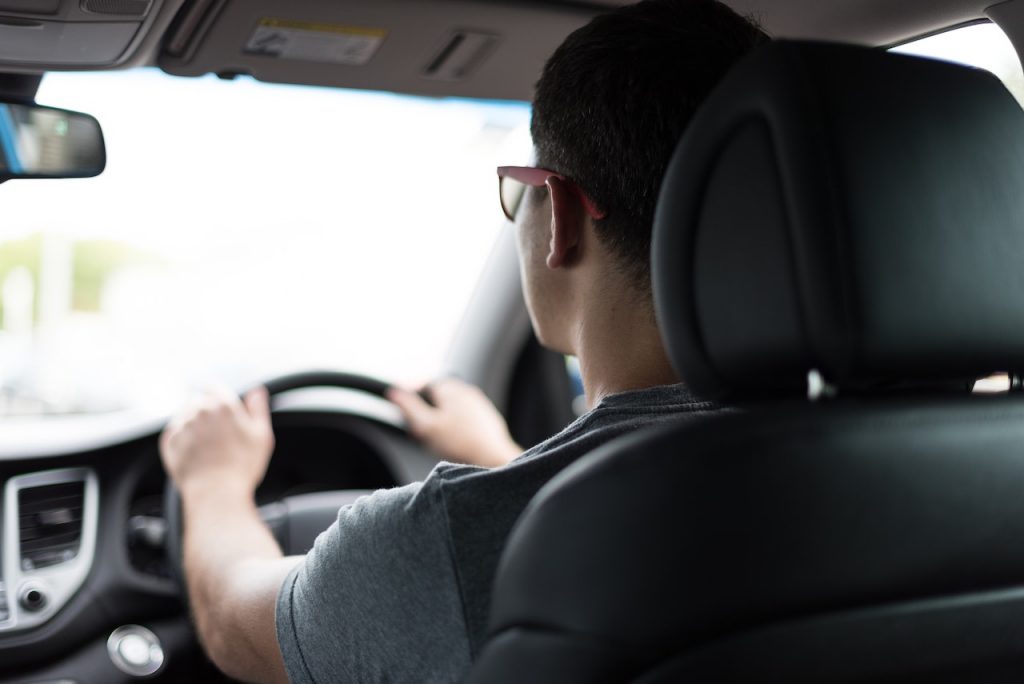
Long-Awaited Recognition
Beyond housing and retirement security, Luqmanul sees the recommendations as a recognition of the value that platform workers bring to the economy. They may fall under the same umbrella and face similar hardships, but food delivery riders and private-hire drivers aren’t exactly in the same boat.
For one, food delivery riders often battle stereotypes of being “uneducated”, or assumptions that they’re “not doing well at home”.
Chef Ilya Nur Fadhly, who worked as a delivery rider before, told AsiaOne back in 2022 that a personal mission of his was to break these stereotypes.
“You will be surprised to find out that most of these riders are either very educated or they have their own businesses, and then this thing is just a part-time thing to supplement income.”
Luqmanul’s experience isn’t too far off. He appears genuinely hurt as he recounts remarks from friends and family when they heard of his food delivery job.
“I would tell them I’m a platform worker and they’ll tend to ‘mansplain’ to me, trying to educate me even though I’m educated, saying that this isn’t a good job. This job is something that is ostracised by society,” says Luqmanul. “Which I feel is far from the truth. As time and tide have told, workers are the bedrock of society.”
He adds: “Once you start to have the CPF system, you’re including [gig workers] into society, including them into the social order.”
It’s not as if platform workers haven’t enjoyed appreciation from the customers they serve. But in Luqmanul’s opinion, mandating platform companies and riders to join the CPF system lends some legitimacy to platform work as respectable work.
In fact, he hopes that one day, platform workers can be recognised as employees though he acknowledges that Rome wasn’t built in a day.

Lesser Earnings
An obvious downside is that it’s almost certain that customers are going to see some price changes. Everyone from the platforms themselves, the government, and former Grab executives acknowledge this.
This could, in turn, affect demand and depress the earnings of platform workers, platforms such as Gojek and Foodpanda have warned.
Some gig workers at a recent dialogue also raised concerns about platforms passing costs on to them, or discriminating agains those who opt into the CPF scheme, per CNA.
In the same event, Senior Minister of State for Manpower Dr Koh Poh Koon attempted to allay these fears, explaining that discrimination is unlikely as platforms would be focused on trying to attract workers and that the “true nature of the market” was that costs would likely go to consumers instead.
Nevertheless, distrust remains among some platform workers.
“Whatever the platform decides goes,” Goh tells me in a huff.
In cases of disputes, Goh feels that the platforms often side with customers—or outrightly refuse to admit the fault even in cases such as app glitches.
And when platforms decide to raise their commission rates, drivers either have to accept it or switch to a different platform.
“When it comes to these policies, we are not very satisfied.”
A perk of the job, though, is that platform workers can choose who they work for—sorry, who they work with. For Goh, TADA is his main choice of platform nowadays due to the “more reasonable” commission rates compared to other players, he says.
For Luqmanul, Deliveroo is usually his platform of choice these days as he’s tired of Foodpanda’s system where delivery riders have to book their working timeslots ahead of time.
Upset with the platform’s rules? Simply close its app and pull up another. This flexibility and agency will likely cushion platform workers from any tricks platform companies might pull.
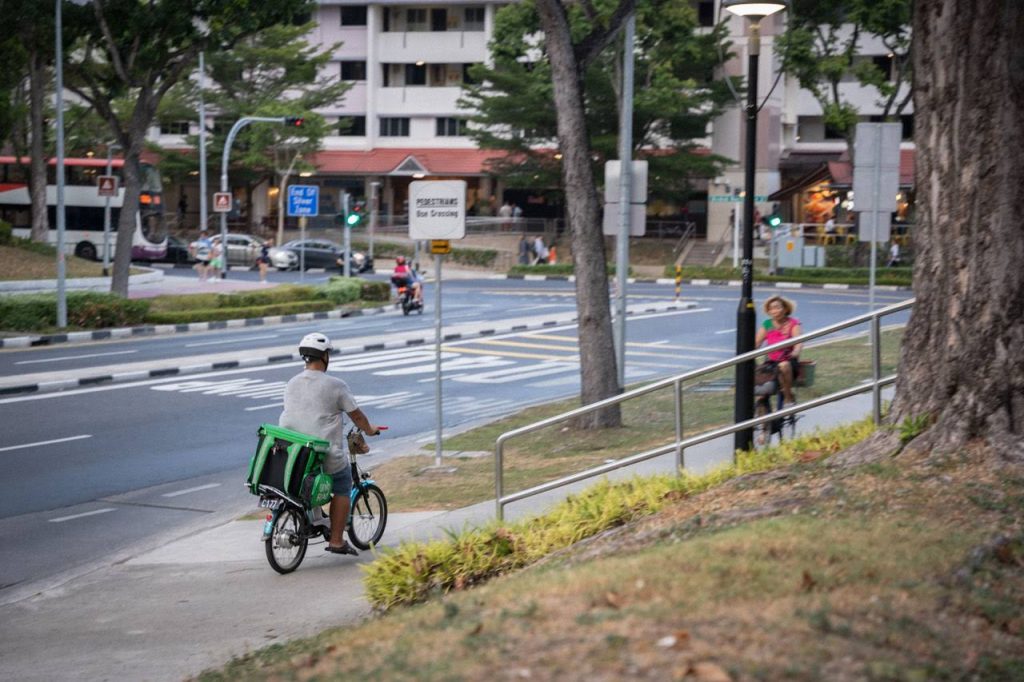
A Capitalist Situationship
Despite the wishes of gig workers like Luqmanul, platforms—both local and international— have been steadfast in their classification of workers like him as independent contractors or partners rather than employees.
Some, like Maverick, are all for it.
“There is the employee mindset. They want all kinds of security. But there are people that prefer freedom.”
He counts himself among the latter, enjoying the liberty to drive as and when he wishes to while tending to his other businesses.
Even though platform workers aren’t official employees, they still enjoy a number of perks—some sort of weird, capitalist situationship, if you will.
Under Foodpanda’s partnership with Temasek Polytechnic and educational platform Gnowbe, riders enjoy free and discounted interactive educational courses. Luqmanul has been taking full advantage of the collaboration and has taken courses for everything from customer service to stock trading.
“What I like most is Deliveroo’s collaboration with Open Classroom. Even now I’m learning C++ and Python, which is free,” he beams.
These courses help delivery riders gain transferable skills, he says. “I think those types of collaborations are productive for workers and society generally. Because you know C++ and Python, it can lead up to you being a full stack developer or data analyst, and from there, you can get employed.”
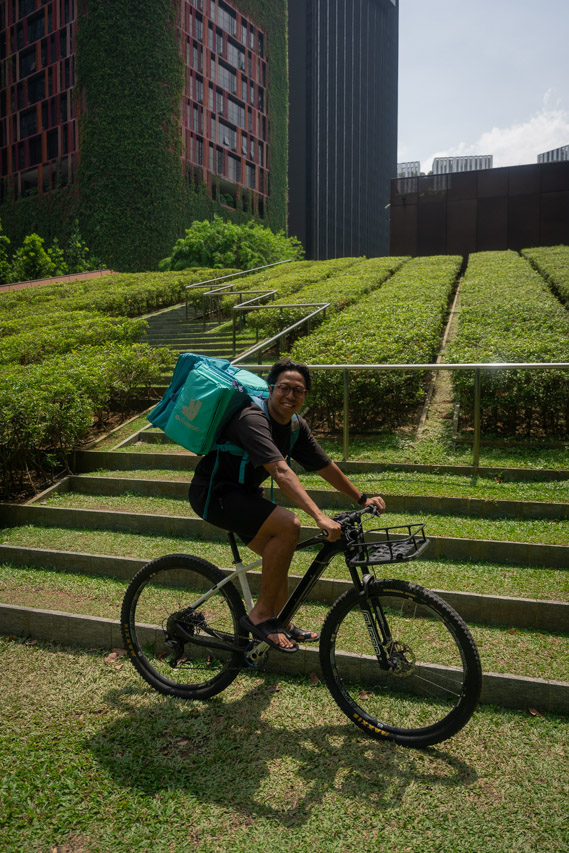
The Missing Puzzle Piece
If there’s one common thread tying our three platform workers together, it’s that all of them acknowledge their privilege of being able to take the time out of their day to have a leisurely chat with a random RICE reporter who slid into their DMs.
For every platform worker with the privilege to do that, there are likely more caught up in the daily grind.
While efforts are being made to ensure they have better representation, a missing piece of the puzzle, at least according to Luqmanul, is better education on financial literacy.
After all, your average worker pulling long shifts each day isn’t likely to spend their downtime reading up on the intricacies of amortisation.
Luqmanul tells me it’s part of the reason he’s taking the time to grant an interview—to be a voice for those who are too busy earning a living.
“What can be done is teach them about financial literacy. When it comes to numbers, a lot of people get lazy. Even for me, I do not like to read because it’s all numbers and it’s very dry.”
“Be financially prudent. Know your leverage as a worker. Never ever settle for being ‘just’ a platform worker.”

